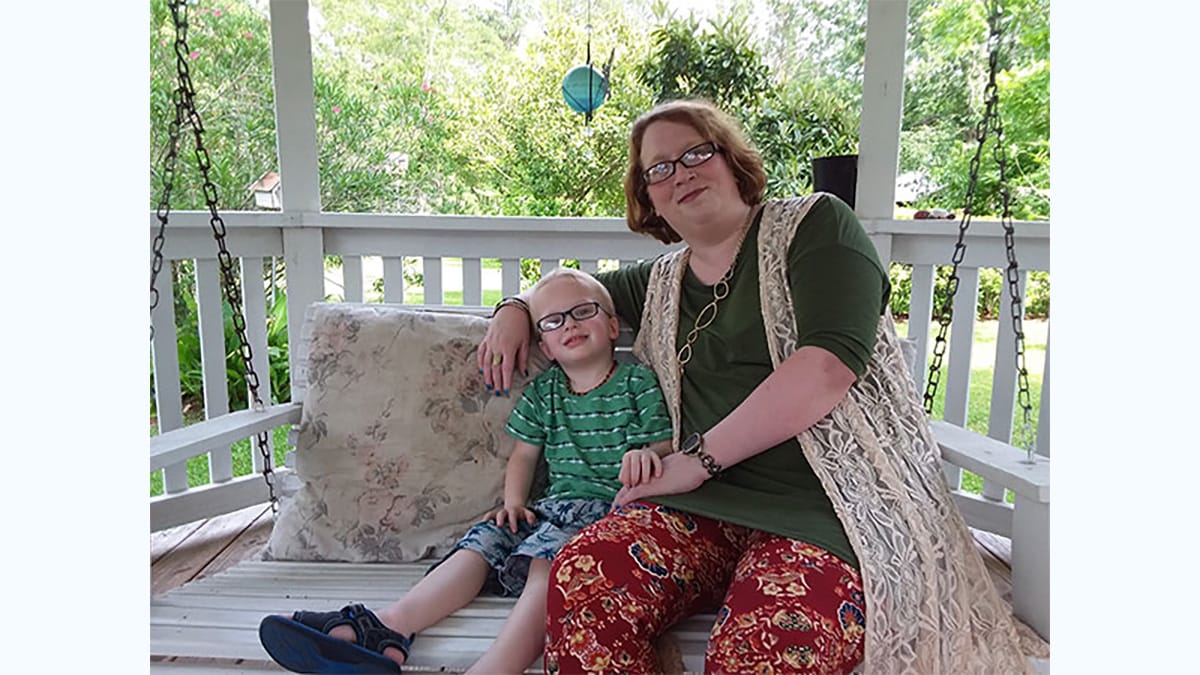At a glance
Debra Turner Bryant has become very familiar with blood clots. After her first diagnosis in 2013 while pregnant, she continued to deal with complications due to clots. This led to her discovering she has May-Thurner syndrome, which you can read about in her journey below.

Debra's story
I'm Debra Turner Bryant, and I want to share my experience with blood clots during pregnancy. Through my personal story, I hope that other women can better understand the very real possibility of a blood clot during pregnancy, and perhaps even save a life.
In 2013, at age 37, I was 11 weeks pregnant with my son. I was on my way to work, but having difficulty walking. Just weeks before, I experienced pain in my back and side, and was uncomfortable while sitting. I dismissed this to the fact that I was just feeling the aches and pains of pregnancy. I had a previously successful pregnancy with my daughter, so I pushed through and went to work.
While at my desk, I noticed that my left leg had swollen to twice the size of my right leg. I went right away to my obstetrician to be checked, and from there I was immediately sent to the emergency department (ED).
In the ED, the vascular surgeon (a specialist highly trained to treat conditions that affect the veins and arteries of the body) came to my room shortly after the ultrasound imaging test results were in. He let me know that I had a deep vein thrombosis—a blood clot inside a vein in my leg.
While this was very concerning for my own health, my main concern was what it could mean for my unborn baby. While in the hospital, I began receiving an injection of Lovenox®, a medicine that helps prevent new blood clots. When I left the hospital, I was told that I could resume normal activities and return to work within a few days.
My obstetrician wanted to make sure that no blood clot in my leg could break off and travel to my lungs. A blood clot in the lung, also called a pulmonary embolism, can be life-threatening. At 6 months pregnant, a medical device used to trap the blood clot before it reaches the lungs, called an IVC filter, was placed in one of my large abdominal veins to prevent this serious complication.
Throughout this entire time, I learned as much as I could about blood clots and pregnancy, and this knowledge helped me to stay as calm as I could. My main focus was having a healthy baby. However, near my due date, I was rushed to the ED very early one morning because of excessive bleeding. We learned that I had blood clots in my placenta (the organ that attaches to the wall of the uterus that provides oxygen and nutrients to the baby) and uterus (the womb), resulting in a complication of pregnancy in which the placenta separates from the uterus. To address this, I had an emergency C-section. My son Charlie was born 2 weeks early.
One month after delivery, I had a follow-up ultrasound. To my surprise, I was told my blood clot was much larger than first thought—it spanned from my groin to the knee and wrapped around behind my knee! I was then referred to an interventional radiologist, a specialist who reviews medical images and performs minor surgical procedures, at a major medical center in South Carolina.
He confirmed that I had May-Thurner syndrome, a rare condition that occurs when a vein in the pelvis compresses the left iliac vein (a vein that passes through your pelvis and lower abdomen to circulate blood from the legs and feet to and from the heart), increasing the chance for blood clots in the pelvis and left leg. Suddenly, everything I had experienced to this point with blood clots was now becoming clearer.
Eventually, the interventional radiologist removed the IVC filter and treated me with tPA, a medicine that dissolves blood clots and improves blood flow. I also had a procedure called a thrombectomy to remove multiple blood clots that had formed in the veins in my left leg and pelvis. Stents were then placed in my veins to help keep them open. A few months later, the interventional radiologist placed two more stents in my veins because the first two became blocked by re-occurring blood clots.
During my pregnancy and after delivery I faced many challenges: experiencing ongoing pain, finding the right healthcare specialists to diagnose and treat my condition, and undergoing multiple surgical procedures. Now, I am under routine care of an amazing hematologist (doctor who specializes in blood conditions) who understands May-Thurner syndrome, as well as the risks of blood clots during pregnancy. The best part of my story has been the birth of my beautiful son Charlie, who is now 5 years old and one of the many joys of my life.
Lessons learned
I offer these suggestions to help women who may find themselves facing blood clots during pregnancy:
- Protect yourself with knowledge. Make certain you know the signs and symptoms of blood clots. Ask questions throughout your pregnancy and after delivery. If you suspect any of the signs and symptoms of blood clots, contact your doctor right away. Be sure to do your own research and increase your understanding, rather than just accepting a diagnosis. You are your best advocate!
- Know your risk, and talk with your doctor to learn if you would benefit from a prevention plan.
- Be positive about your circumstances. Rest assured that you are not alone, and that others have experienced a similar journey with blood clots.
CDC would like to thank Debra for sharing this personal story.
